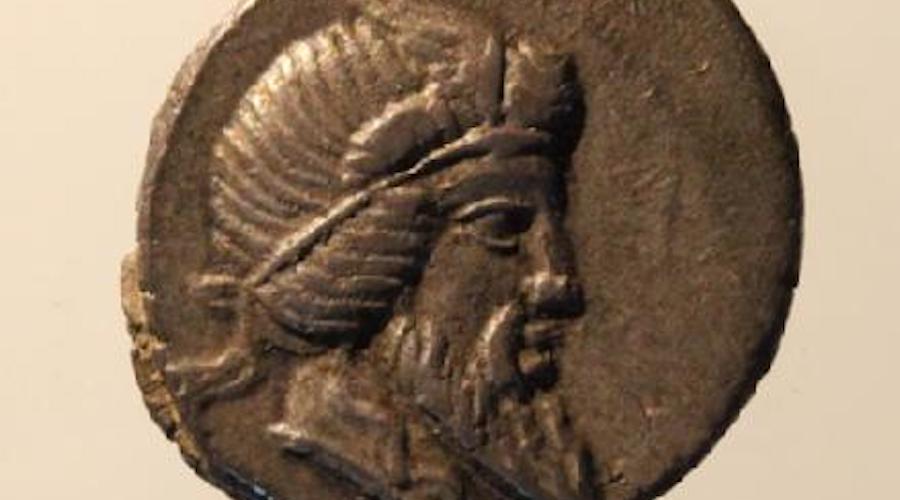Valentina Ruiz Leotaud | April 17, 2022

Silver denarius. (Image courtesy of the University of Warwick).
The silver content of Roman denarii has shed new light on the financial crisis briefly mentioned by the Roman statesman and writer Marcus Tullius Cicero in his essay on moral leadership, De Officiis.

According to researchers at the University of Warwick and the University of Liverpool who analyzed coins of the period, the debasement of the currency was far greater than historians had thought, with coins that had been pure silver before 90 BC cut with up to 10% copper five years later.
“The Romans had been used to extremely fine silver coinage, so they may well have lost confidence in the denarius when it ceased to be pure,” Matthew Ponting, one of the archaeologists involved in the research, said in a media statement.
“The precise level of debasement might have been less important to contemporaries than the mere realization that the coin was adulterated and no longer made of true ‘silver.’”
Pointing explained that using a minimally invasive sampling technique to take samples from important coins, he and his colleagues were able to identify a significant decline in the value of the denarius—from being a pure silver coin, the denarius first dropped to under 95% fine, and then it fell again to 90%, with some coins as low as 86%. This would suggest a severe currency crisis.
In the words of Cicero
For the group, the discovery of this significant decrease in the value of the denarius brings some clarity to Cicero’s 86 BC quote that read: “The coinage was being tossed around so that no one was able to know what he had.”
The reference is part of an anecdote describing self-serving behaviour by Marius Gratidianus, who took credit for a proposal for currency reform worked out jointly by the tribunes and the college of praetors and became hugely popular with the public as a result.
“In the years after 91 BC, the Roman state was in danger of becoming bankrupt. The Romans were at war with their own allies in Italy, and by the conclusion of the war, in 89 BC, there was a debt crisis,” researcher Kevin Butcher said. “By 86 BC there appears to have been a crisis of confidence in the currency, too. Cicero related how the Roman tribunes approached the college of praetors to resolve the crisis before Gratidianus claimed sole credit for the collective effort.”
Butcher pointed out that one theory is that Gratidianus fixed the exchange rate between the silver denarius and the bronze, which had only recently been reduced in weight. Another proposition states that he published a method for detecting fake denarii and so restored faith in the coinage.
“Unfortunately, Cicero’s choice of words is too obscure for historians to determine exactly what was going on,” the expert said. “His purpose in writing about it wasn’t to illuminate monetary history; he was just using the incident as an illustration of a Roman magistrate behaving badly by taking credit for the work of others.”
Silver content declined in two stages
The results of the metallurgical analysis suggest that the financial difficulties experienced by Rome in these years led to a relaxation of standards at the mint in 90 BC, with the result that the silver content of the coinage declined in two stages so that by 87 BC the coinage was deliberately alloyed with 5–10% copper.
“This could be the meaning of Cicero’s words: that the value of the coinage was ‘tossed about’ because nobody could be certain whether the denarii they had were pure or not,” Butcher said. “It is all the more noteworthy that around the time Gratidianus published his edict, the standard of fineness rose sharply, reversing the debasement and restoring the denarius to a high-quality currency.”
For the archaeologist, although the precise chronology remains uncertain, the new scientific data suggest that it could have been the main aim of Gratidianus’ edict, rather than something to do with exchange rates between silver and bronze or detecting forgeries.
In the decades that followed, the Romans avoided debasing the denarius again, until the state once again faced huge expenses during the civil war between Pompey and Julius Caesar. Even then, the Roman mint did not go as far as it had in the time of Gratidianus.
No comments:
Post a Comment